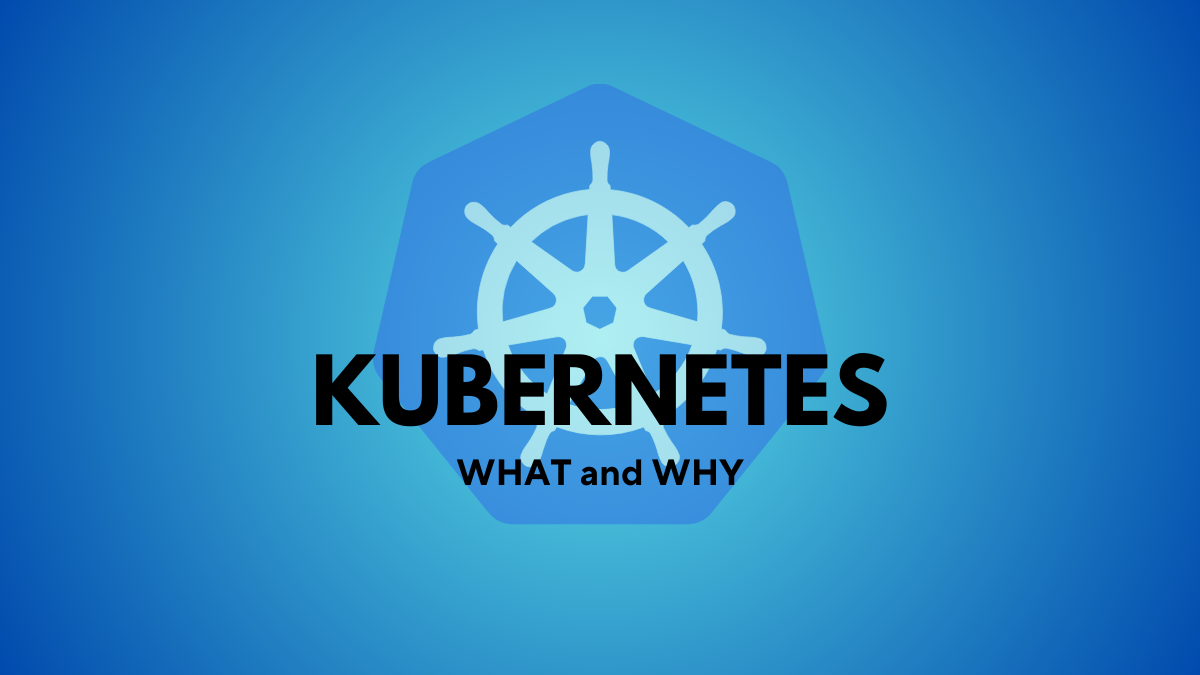Learning Kubernetes: What and Why?
 Md. Musfikur Rahman Sifar
Md. Musfikur Rahman Sifar
In the world of modern application development, Docker was a groundbreaking solution, making it simple to create, deploy, and run applications within containers. But as organizations scale and applications become more complex, the limitations of Docker alone start to show. This is where Kubernetes steps in, offering advanced management and orchestration capabilities that address the challenges Docker struggles with at an enterprise level.
Here’s a detailed look at why Kubernetes has become the go-to choice for container orchestration, picking up where Docker leaves off and making large-scale application management efficient, automated, and resilient.
1. Automated Scaling and Deployment
Docker excels at packaging applications but lacks the automation to handle fluctuations in user demand. For instance, imagine an online marketplace during a seasonal sale. As thousands of users flood the site, the demand on various services—like product listings, payments, and user profiles—skyrockets. Manually starting new Docker containers to meet this demand can be time-consuming and impractical.
Kubernetes, however, has a powerful feature called Horizontal Pod Autoscaling. It monitors your application’s resource usage (like CPU and memory) and automatically adjusts the number of running containers, called “pods,” based on the demand. This means Kubernetes can add more instances of the services that are under heavy load, then scale them back down when traffic subsides. This kind of automated scaling is invaluable for maintaining application performance while keeping resource usage efficient.
In simple terms, Kubernetes acts like a thermostat, adjusting resources as needed to maintain a comfortable “temperature” for your application’s performance. This level of automation is critical for enterprises, where fluctuations in user demand are unpredictable and manual scaling isn’t feasible.
2. Self-Healing and Fault Tolerance
In any system, failures are inevitable—containers may crash, hardware may fail, or services might become unresponsive. Docker alone doesn’t handle these failures; if a container goes down, it requires manual intervention or custom scripts to detect and restart it. This approach can lead to prolonged downtime and inconsistent application availability, which is especially risky for mission-critical applications.
Kubernetes solves this with its self-healing capabilities. When a container crashes or becomes unresponsive, Kubernetes automatically detects the issue, kills the faulty container, and replaces it with a new one. This process ensures that your application remains available even when failures occur.
For example, imagine an online banking app where the user account service is crucial. If this service container crashes, Kubernetes quickly replaces it with a healthy one, ensuring minimal downtime. This feature not only enhances resilience but also saves development teams from creating complex scripts to monitor and restart services. With Kubernetes, your application becomes more reliable, offering a consistent experience to users even during unexpected issues.
3. Load Balancing and Traffic Management
In a Docker setup, traffic management and load balancing among containers can become complex, especially as the number of containers grows. If you have multiple instances of a service running (say, three instances of an API server), you need a way to distribute incoming requests evenly among them. Docker itself doesn’t provide built-in load balancing, so you would typically have to set up and manage external load balancers, which adds complexity and requires specialized configuration.
Kubernetes simplifies this with its built-in load balancing. It automatically distributes incoming traffic across multiple instances of a service, ensuring that no single instance is overwhelmed while others remain idle. Kubernetes also checks the health of each container, directing traffic only to healthy ones, which further improves reliability.
This built-in load balancing is especially useful for applications that experience high traffic, like a news website during a breaking news event. Kubernetes ensures that the increased load is spread across all available instances of the service, preventing slowdowns or crashes. By automatically balancing the load, Kubernetes helps maintain a smooth, responsive experience for users.
4. Environment Consistency Across Deployments
In today’s multi-cloud, hybrid environments, organizations want flexibility. They might want to deploy some parts of their application on-premises, some in a private cloud, and others in a public cloud. With Docker alone, maintaining consistency across these different environments can be challenging, as configurations and setups vary by infrastructure.
Kubernetes addresses this with its portable, consistent deployment model. Kubernetes clusters are designed to work across any environment that supports Kubernetes, from local data centers to major cloud providers like AWS, Google Cloud, and Azure. This allows organizations to create a single configuration and deploy it consistently across all environments, with Kubernetes handling the nuances of each.
For instance, an e-commerce company might use a public cloud for its customer-facing application but keep its inventory database on-premises. With Kubernetes, they can maintain a consistent deployment and management strategy across both environments, without needing to worry about environment-specific configurations. This consistency simplifies management, reduces errors, and gives organizations the flexibility to choose the best infrastructure for each part of their application.
5. Efficient Resource Utilization
Managing resources efficiently is crucial, especially in enterprise environments where multiple applications share the same infrastructure. Docker containers share the host OS, which improves resource usage compared to virtual machines. However, when scaling up to hundreds or thousands of containers, managing resource allocation becomes complex, and containers can end up consuming more resources than needed, leading to inefficiencies and increased costs.
Kubernetes introduces the concept of resource requests and limits for each container. This allows administrators to specify how much CPU and memory each container can use, ensuring that applications have the resources they need without exceeding limits. Kubernetes also has a built-in scheduler that assigns containers to nodes based on available resources, further optimizing utilization.
Imagine a large enterprise with multiple applications running on the same Kubernetes cluster. Each application can specify its resource requirements, and Kubernetes allocates resources based on these needs, maximizing efficiency and minimizing waste. This level of control helps organizations run large, complex applications without overspending on infrastructure.
Kubernetes: The Evolution of Container Orchestration for the Enterprise
While Docker is excellent for building, packaging, and running containers, it wasn’t designed to handle the complexities of managing large-scale applications. Kubernetes takes containerized applications to the next level by offering automated scaling, self-healing, load balancing, environment consistency, and efficient resource management. These features make Kubernetes essential for enterprises looking to deploy complex, multi-service applications reliably and efficiently. Docker and Kubernetes create a powerful ecosystem. Docker provides a standardized way to package applications, and Kubernetes handles the orchestration, making it easier for organizations to manage, scale, and optimize applications as they grow. Kubernetes bridges the gap, transforming containerized applications into highly available, resilient systems suited for enterprise-scale workloads.
Amazing Resources:
Follow me on linkedin: Md. Musfikur Rahman Sifar | LinkedIn
Subscribe to my newsletter
Read articles from Md. Musfikur Rahman Sifar directly inside your inbox. Subscribe to the newsletter, and don't miss out.
Written by
